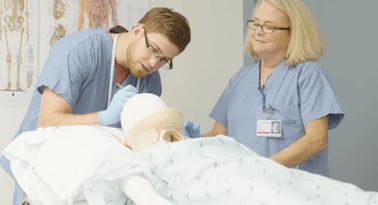This program is not currently accepting applications.
IONM Program Curriculum
Our IONM program provides an accelerated professional course background to prepare you to assist in delivering patient-centered care as a valued member of a healthcare team.
This CAAHEP-accredited program allows the completer to follow the American Board of Registration for END Technologists (ABRET) Pathway I towards Certification in Neurointraoperative Monitoring (CNIM).
You will take the courses in the order listed below, gaining valuable experience in our clinical partner facilities and learning how to perform various IONM procedures including EEG, SSEP, BAEP, MEP, EMG, cranial nerve (CN live and triggered, SEMG/TEMG) and peripheral nerve (PN) monitoring techniques.
